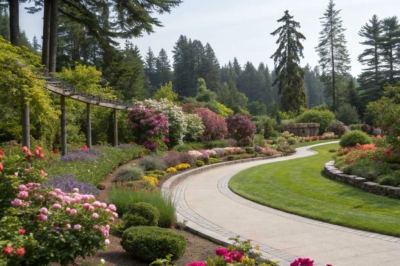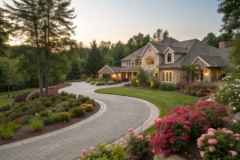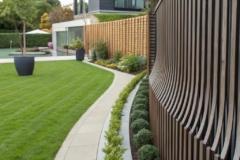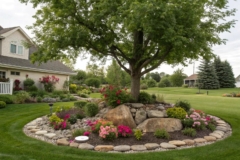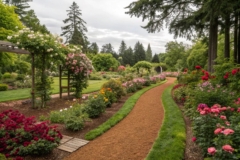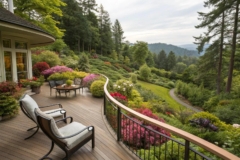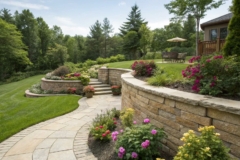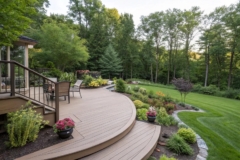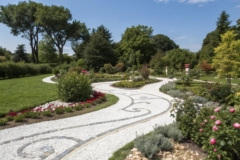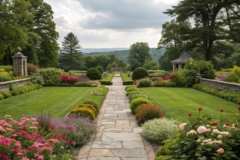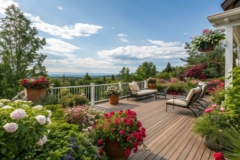1. Curved Lighting Paths
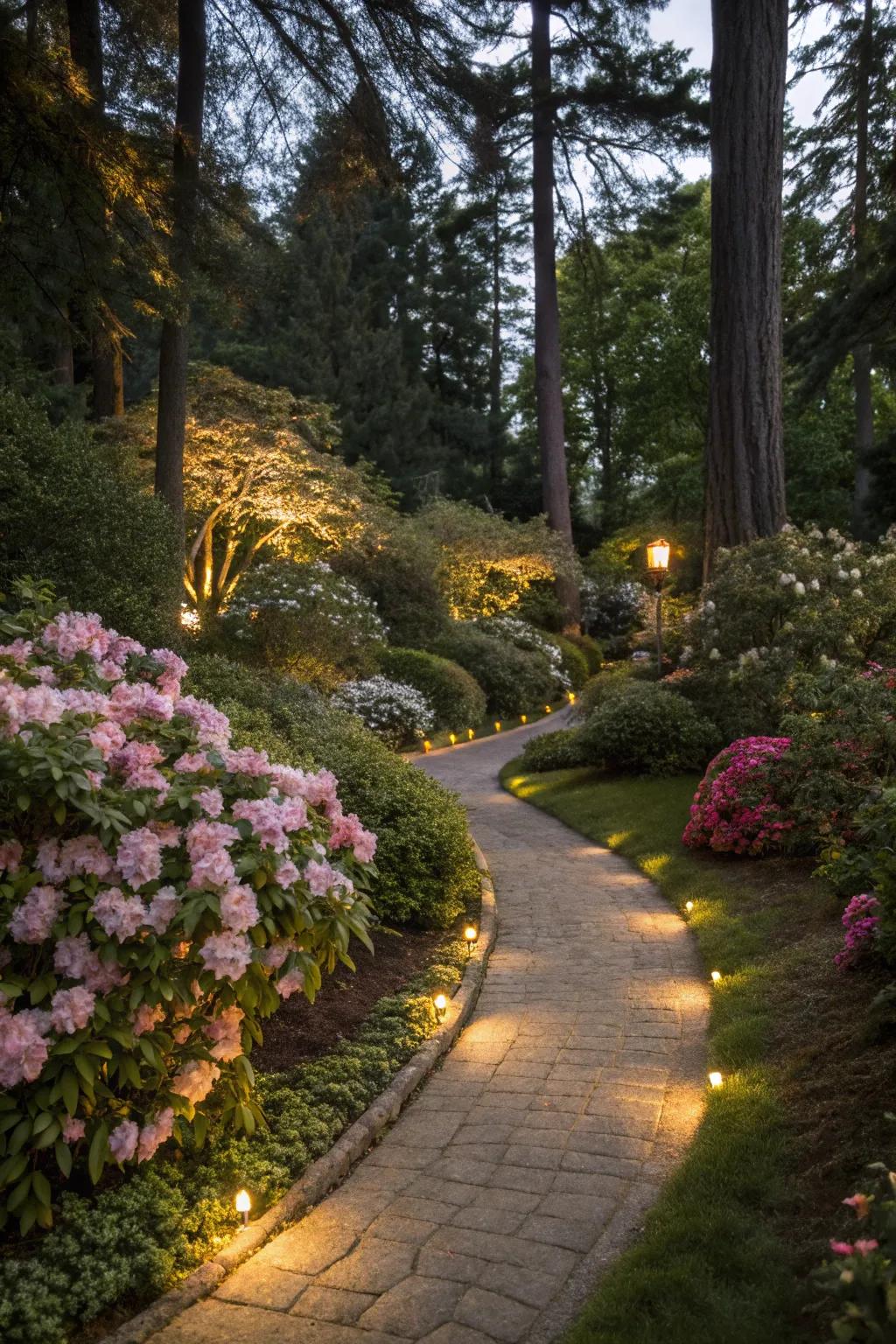
Enhance your garden’s curves with thoughtfully placed lights. In my garden, this creates a magical atmosphere come dusk.
Some handy options:
- Solar Pathway Lights: Illuminate your curved garden paths effortlessly with these efficient solar pathway lights.
- LED Garden Spike Lights: Highlight garden curves with adjustable LED spike lights, adding a sophisticated touch.
- Outdoor String Lights: Create a whimsical glow along winding paths using charming outdoor string lights.
2. Colorful Planting Along Curves
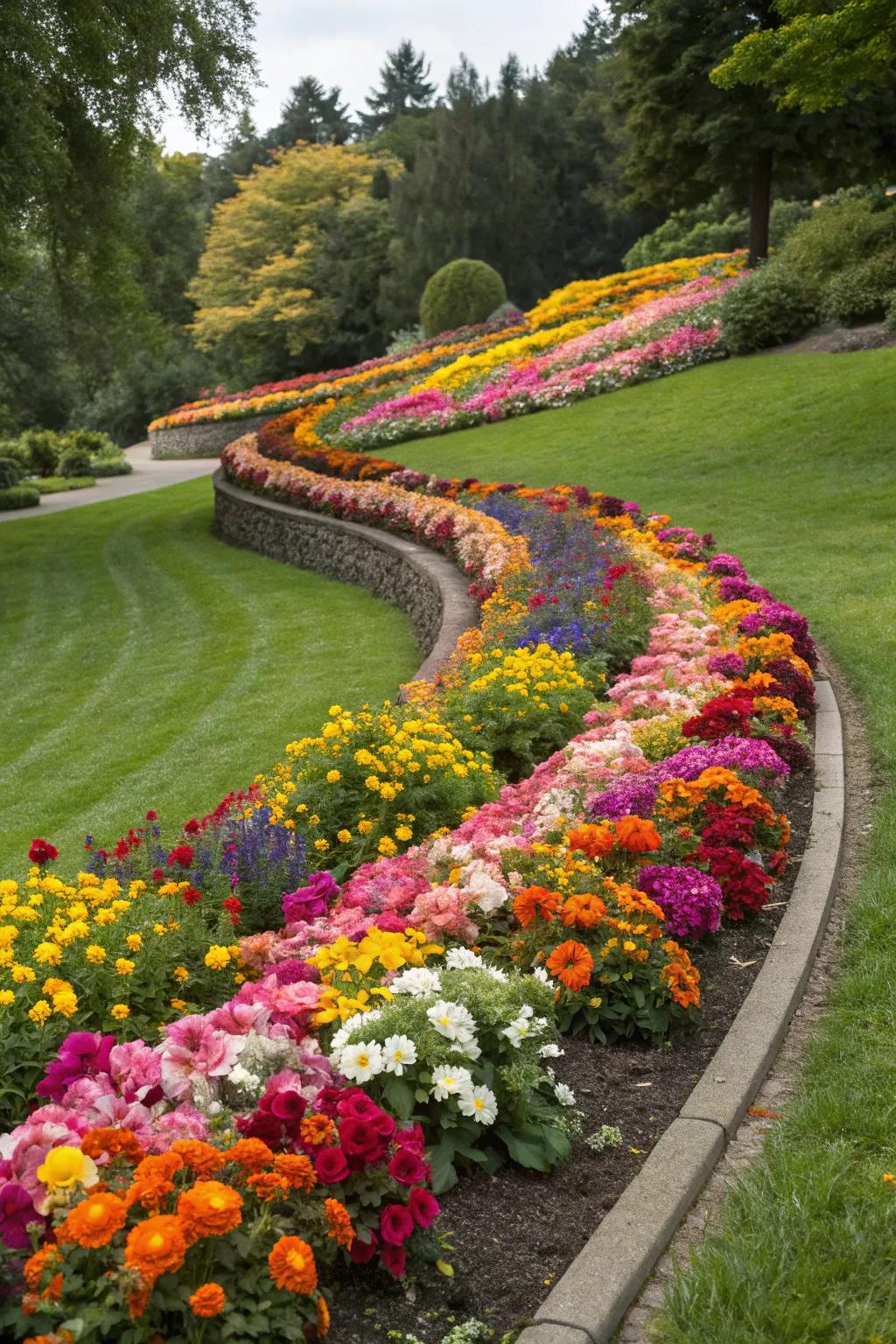
Plant vibrant flowers along the curves to enhance the design’s natural flow. In my garden, layered planting with various heights adds depth and intrigue.
Consider these options:
- Mixed Flower Seed Pack: Brighten up your garden curves with vibrant flowers. Perfect for adding natural flow.
- Adjustable Garden Edging: Define your garden curves beautifully with flexible edging. Enhance separation and aesthetics.
- Organic Plant Fertilizer: Boost flower growth with rich nutrients for vibrant and healthy blooms along garden paths.
3. Curved Raised Planters
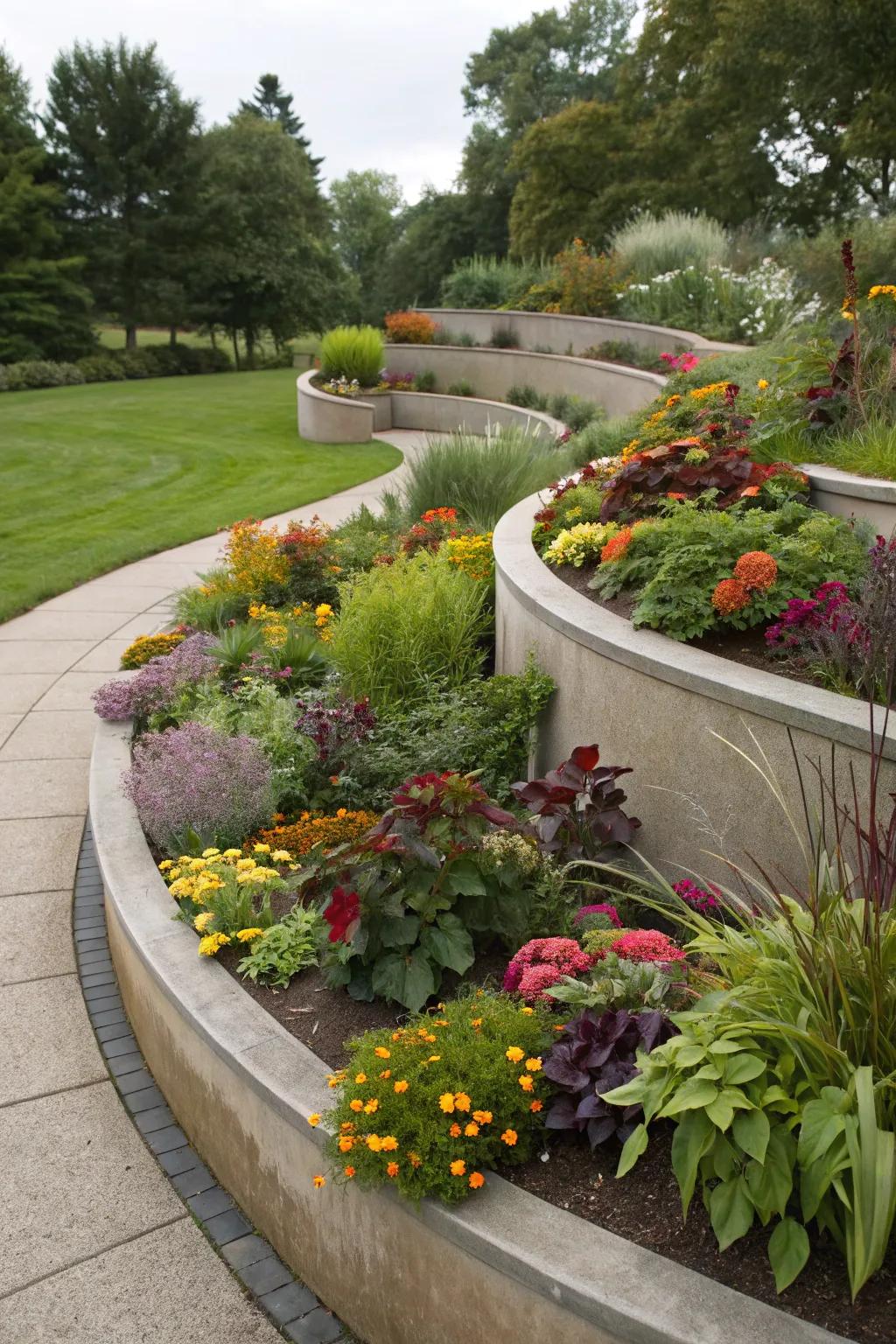
Use curved raised planters to add height and dimension. They create an eye-catching centerpiece and are easy to maintain.
Give these a look:
- Curved Metal Raised Garden Bed: Enhance your garden with durable, stylish metal planters. Perfect for creating elegant curves.
- Curved Wooden Planter Box: Add a natural touch with wooden planters, ideal for stylish and functional landscaping.
- Curved Stone Planter: Create a focal point in your garden with elegant stone planters, adding timeless beauty.
4. Curved Garden Beds
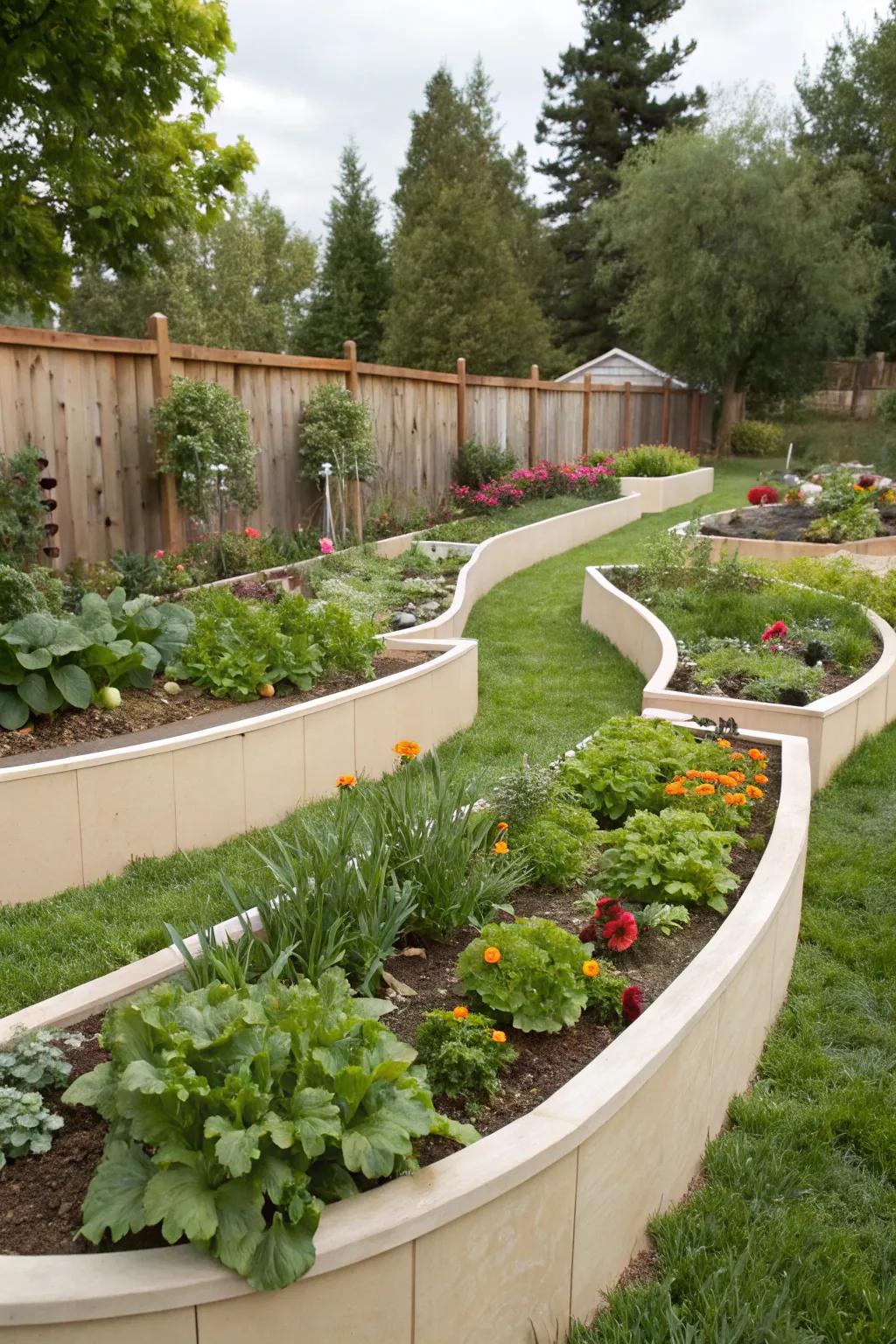
Consider curved garden beds for a unique twist on traditional layouts. My raised beds with curved edges make planting both fun and functional.
A few things you might like:
- Modular Raised Garden Bed Kit: Elevate your gardening experience with flexible modular kits for personalized curved layouts.
- Flexible Garden Edging: Define your garden’s curves effortlessly with durable and flexible garden edging solutions.
- Curved Planter Box: Add elegance to your gardening space with stylish and practical curved planter boxes.
5. Embrace Curved Edging
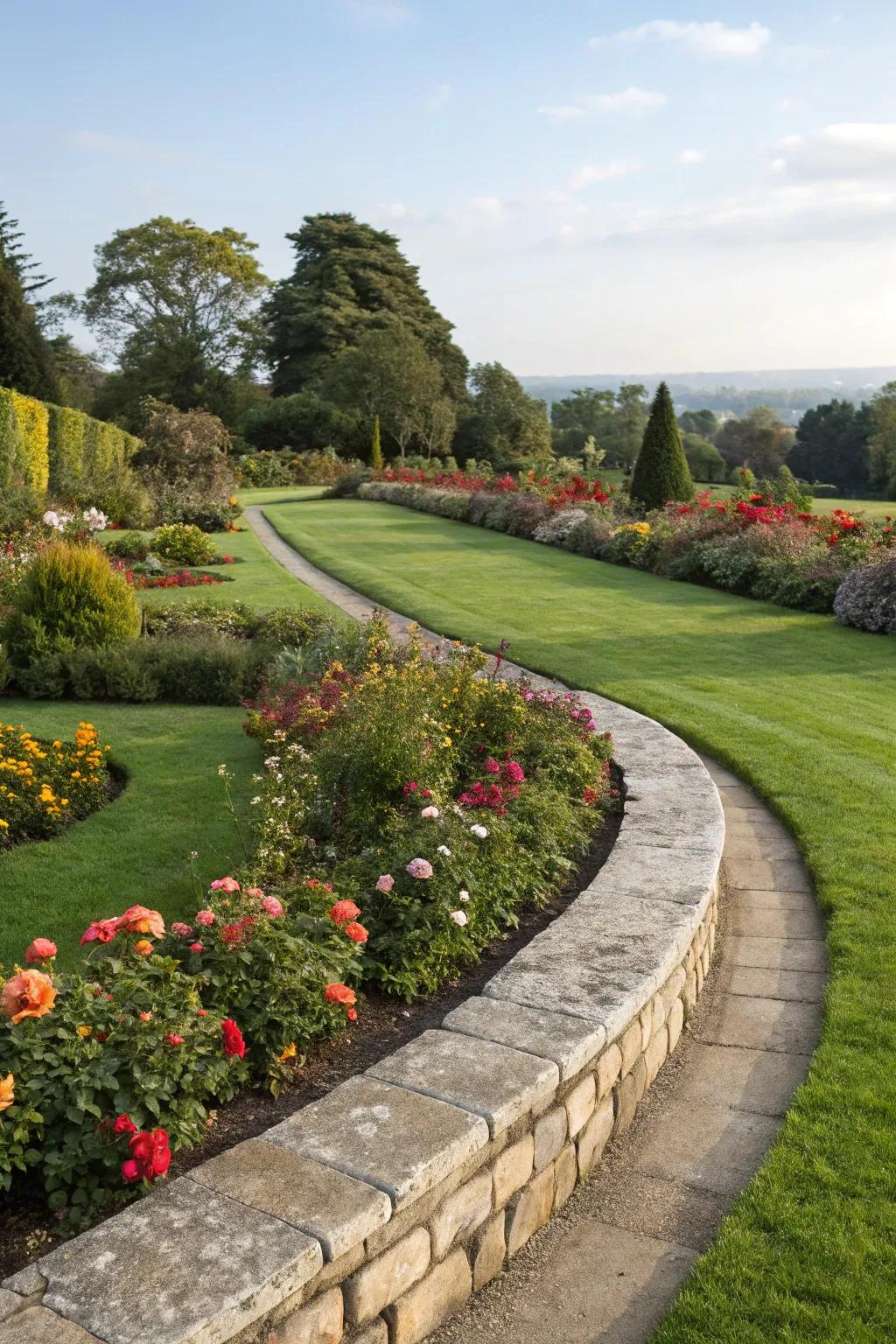
Start with curved edging to define your garden’s boundaries using materials like bricks or stones. In my own garden, this approach softened the transition from lawn to flowerbeds beautifully.
Check these products out:
- Curved Garden Edging Stones: Define your garden’s boundaries with these durable stones for a polished, natural look.
- Flexible Landscape Edging Kit: Easily shape your garden with this flexible edging kit for beautiful curved designs.
- Decorative Brick Edging: Accent your lawn with decorative brick edging for a classic touch that enhances any garden.
6. Create a Curved Pathway
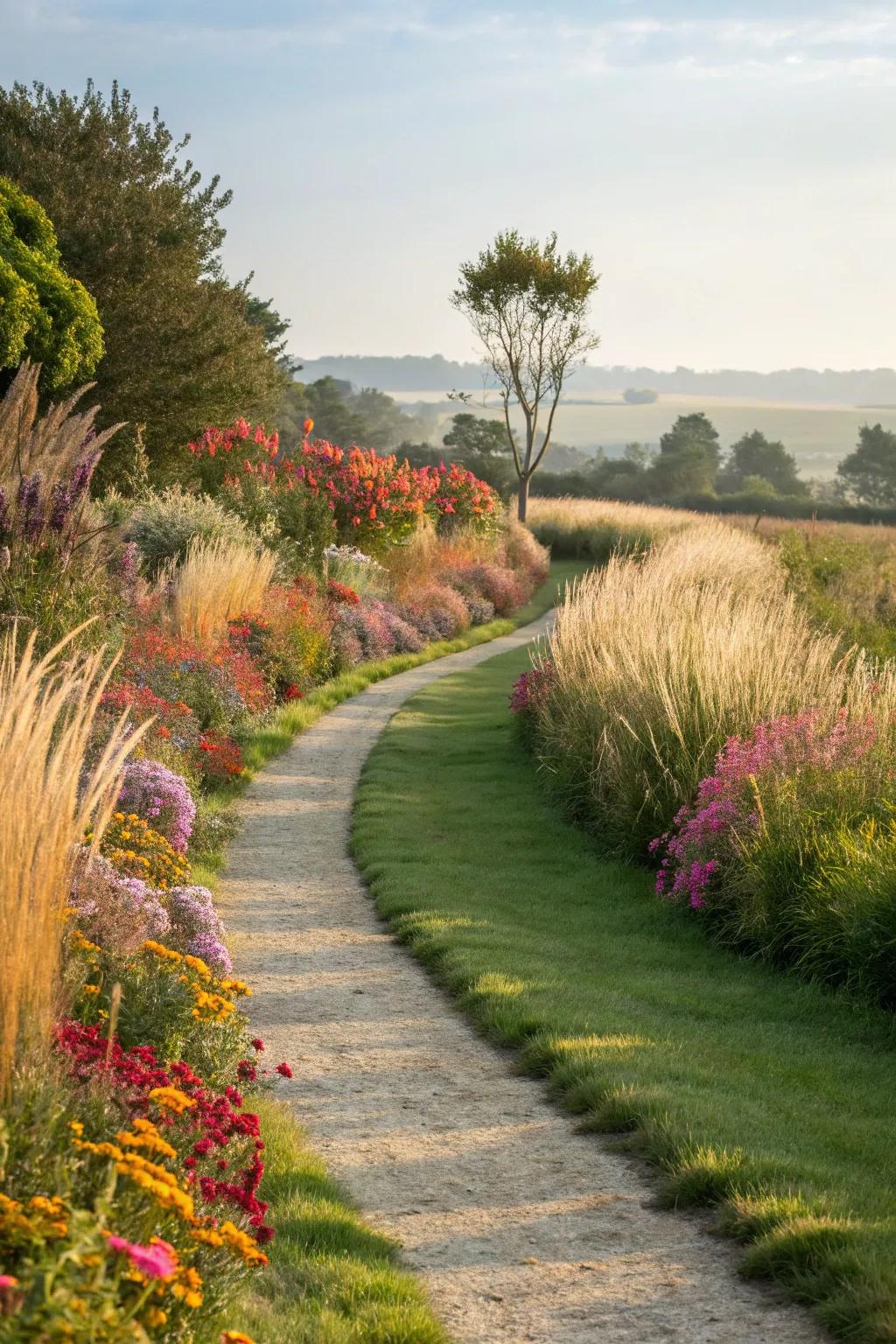
A curved pathway invites exploration, leading guests through your garden’s hidden nooks. I love how my own winding path adds a sense of journey to my backyard.
Some ideas to consider:
- Garden Pathway Edging: Enhance your garden path’s definition and appeal with durable and flexible pathway edging.
- Stepping Stones: Add charm to your garden’s curved pathway with decorative and sturdy stepping stones.
- Outdoor Pathway Lights: Illuminate your garden path at night with energy-efficient, weather-resistant outdoor lights.
7. Swirling Water Features
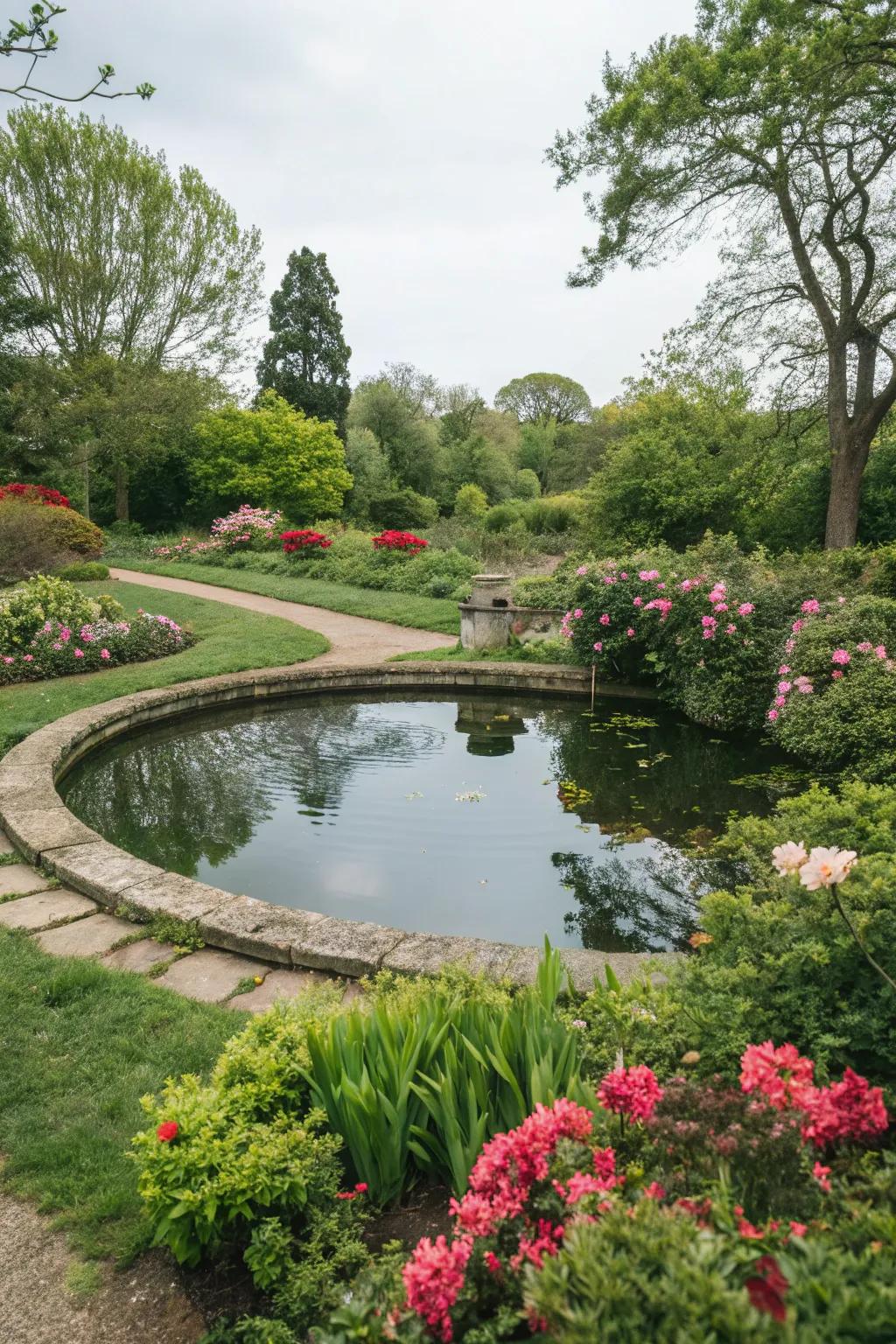
Install a round or oval water feature to mirror nature’s curves. My own circular pond adds tranquility with its gentle ripples.
These products might help:
- Round Garden Pond Kit: Create tranquil spaces with this easy-to-install round pond kit, perfect for any garden.
- Solar-Powered Water Fountain Pump: Enhance your pond with a solar-powered pump, providing soothing water sounds without electricity.
- Floating Pond Lights: Illuminate your water feature beautifully with LED floating lights for a magical evening ambiance.
8. Natural Curves with Shrubs
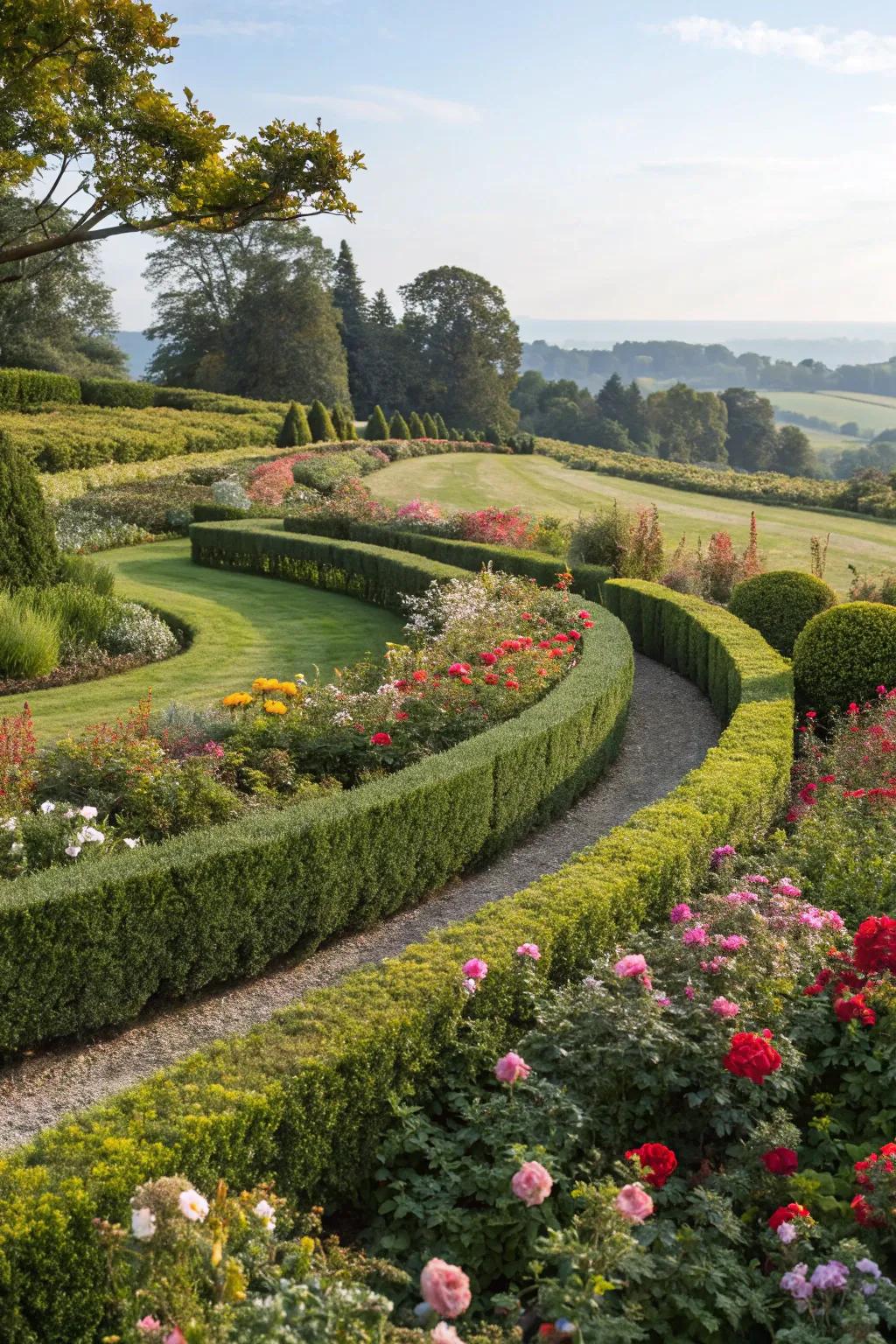
Use shrubs to create natural curves, leading the eye through your landscape. Strategically placed, they add both structure and softness.
Possibly helpful picks:
- Adjustable Garden Edging Kit: Define elegant curves in your garden effortlessly. Create structured landscapes with ease.
- Boxwood Shrubs for Landscaping: Add lush greenery and natural flow to your garden. Perfect for maintaining stylish curves.
- Landscaping Fabric with Anchoring Stakes: Prevent weeds and maintain the beauty of curved landscapes. Easy to use and durable.
9. Curved Retaining Walls
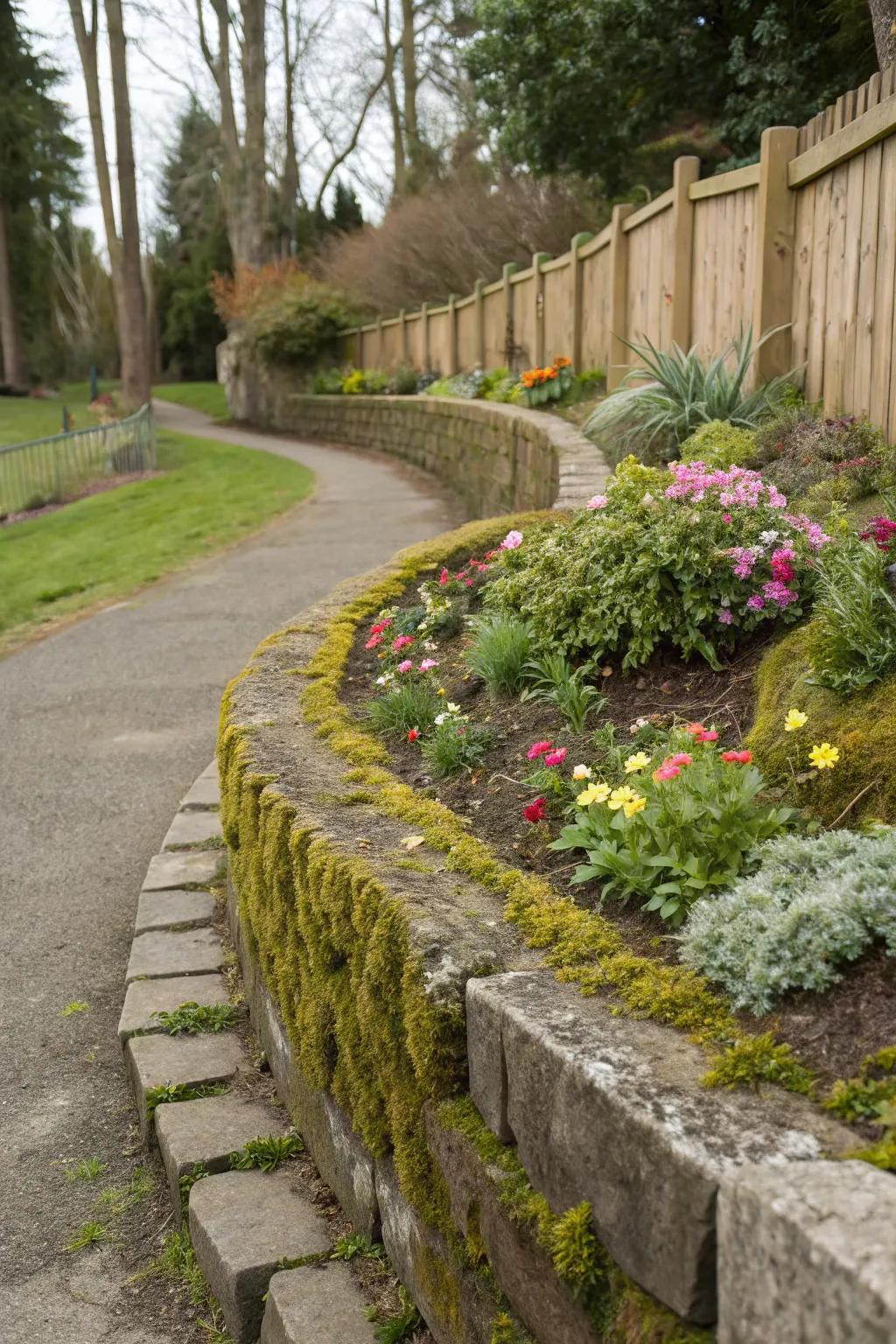
Curved retaining walls can add both function and beauty, creating terraces or defining spaces. I love how they add a sculptural element to my hillside garden.
Check if these fit your needs:
- Garden Landscape Edging Stones: Enhance your garden’s beauty with durable and versatile edging stones for a polished look.
- Retaining Wall Blocks: Create beautiful terraces with these versatile retaining wall blocks for added structure and style.
- Landscape Fabric: Use quality landscape fabric underneath stones to prevent weeds and ensure proper drainage.
10. Curved Flower Borders
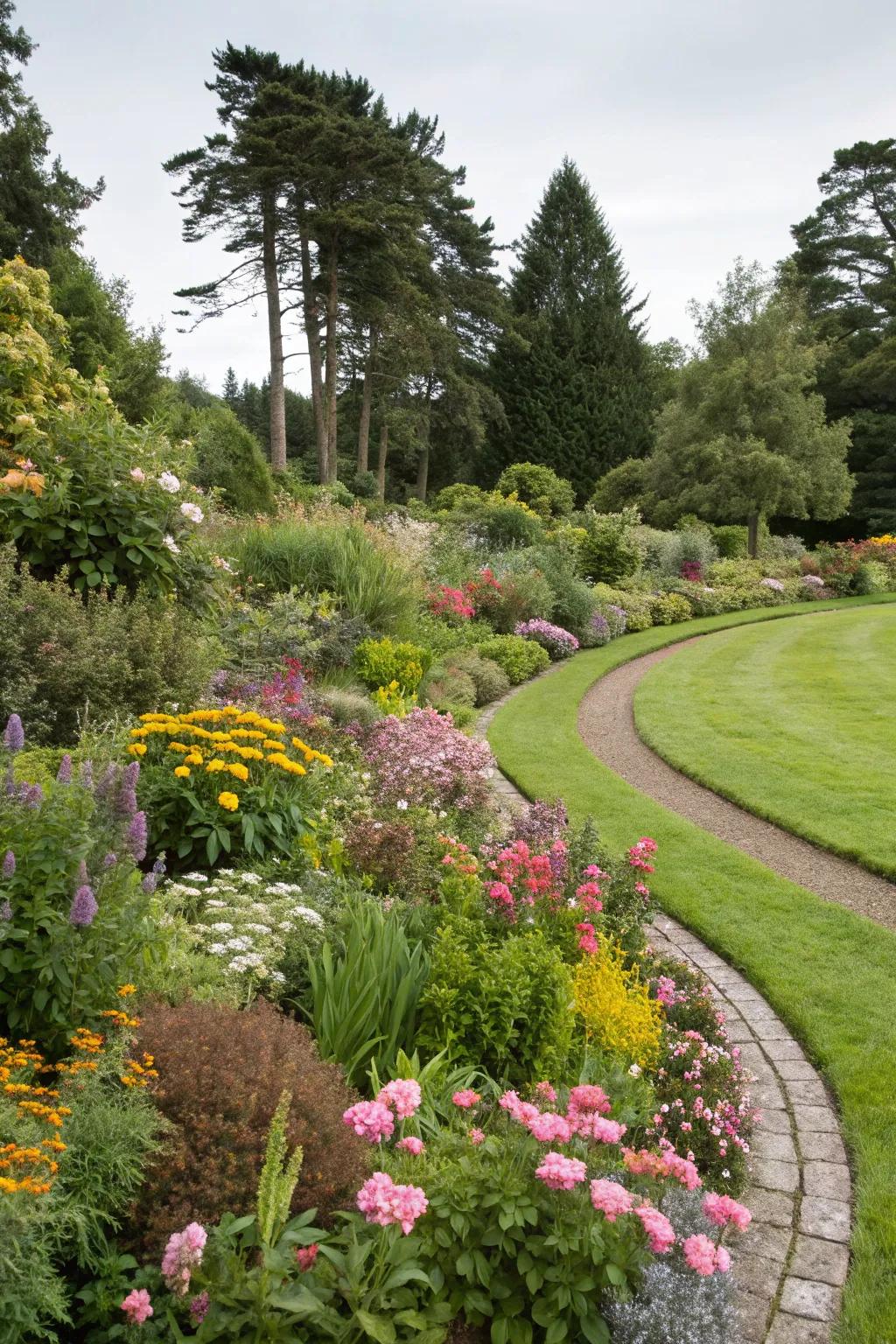
Define flowerbeds with curved borders to echo nature’s randomness. This design keeps my garden feeling fresh and lively.
Maybe worth checking out:
- Flexible Garden Edging: Easily define beautiful, curved flower beds that mimic natural landscapes in your garden.
- Decorative Garden Stones: Enhance your garden paths and borders with elegant, weather-resistant decorative stones.
- Garden Border Fence Panels: Add charm and structure to your flower borders with versatile panel fencing.
11. Circular Lawn Spaces
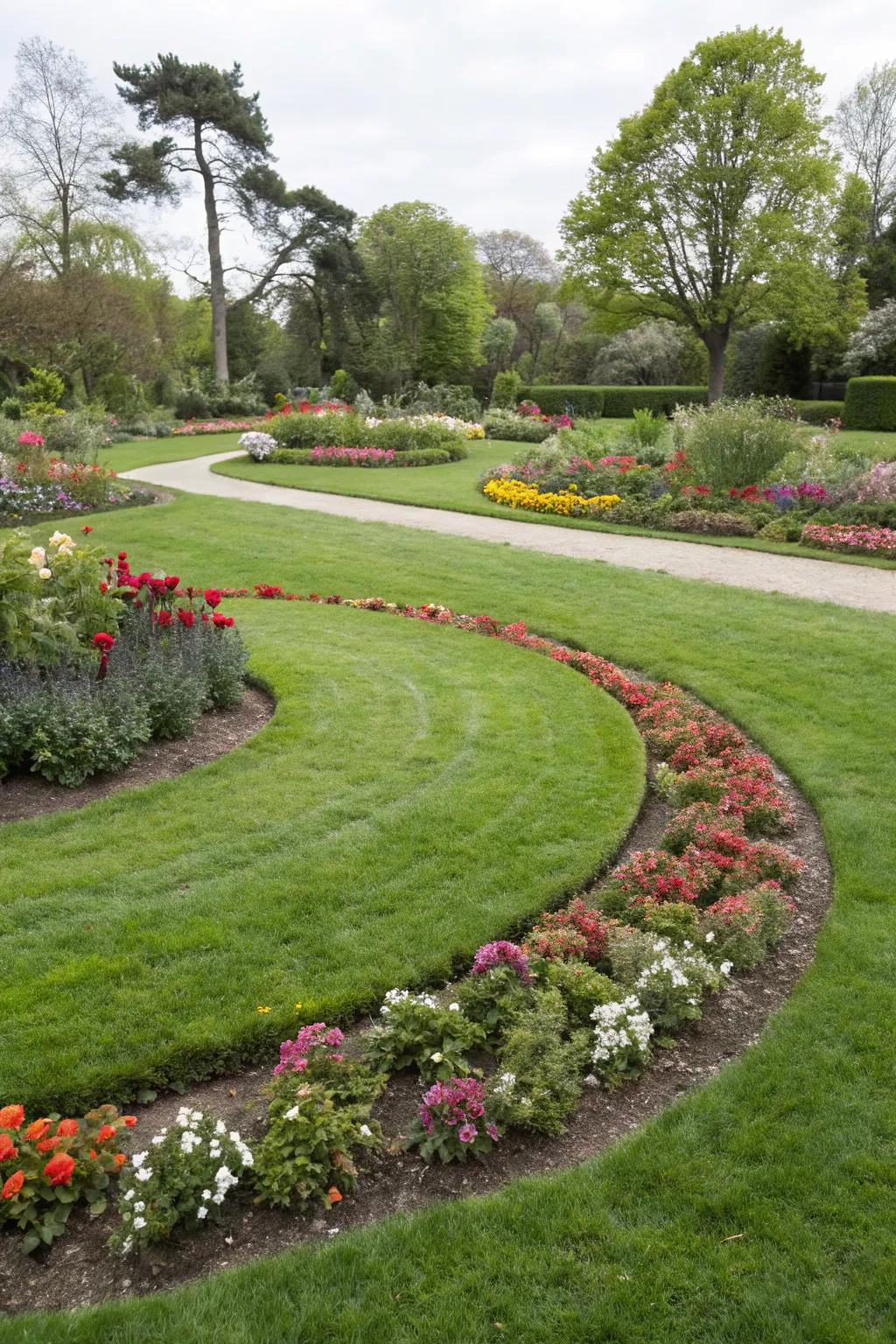
Design a circular lawn area for an unexpected twist. This shape feels intimate and enclosed, perfect for a small, private retreat.
Useful items to consider:
- Solar Garden Lights: Illuminate your circular lawn with solar lights for an enchanting evening ambiance.
- Decorative Garden Edging: Define your circular lawn with stylish garden edging for a polished, finished look.
- Outdoor Garden Bench: Create a cozy retreat with a durable garden bench for relaxation in your circular lawn.
12. Curved Trellises

Add curved trellises to support climbing plants, creating vertical interest. They bring a touch of elegance to otherwise plain walls.
Possibly handy products:
- Metal Garden Arc Trellis: Enhance your garden’s elegance with a durable metal arc trellis for climbing plants.
- Decorative Wall-Mounted Trellis: Add sophistication and support for your climbers with a wall-mounted decorative trellis.
- Modular Garden Trellis Panels: Create versatile climbing spaces using modular trellis panels for dynamic vertical garden designs.
13. Curved Garden Bridges
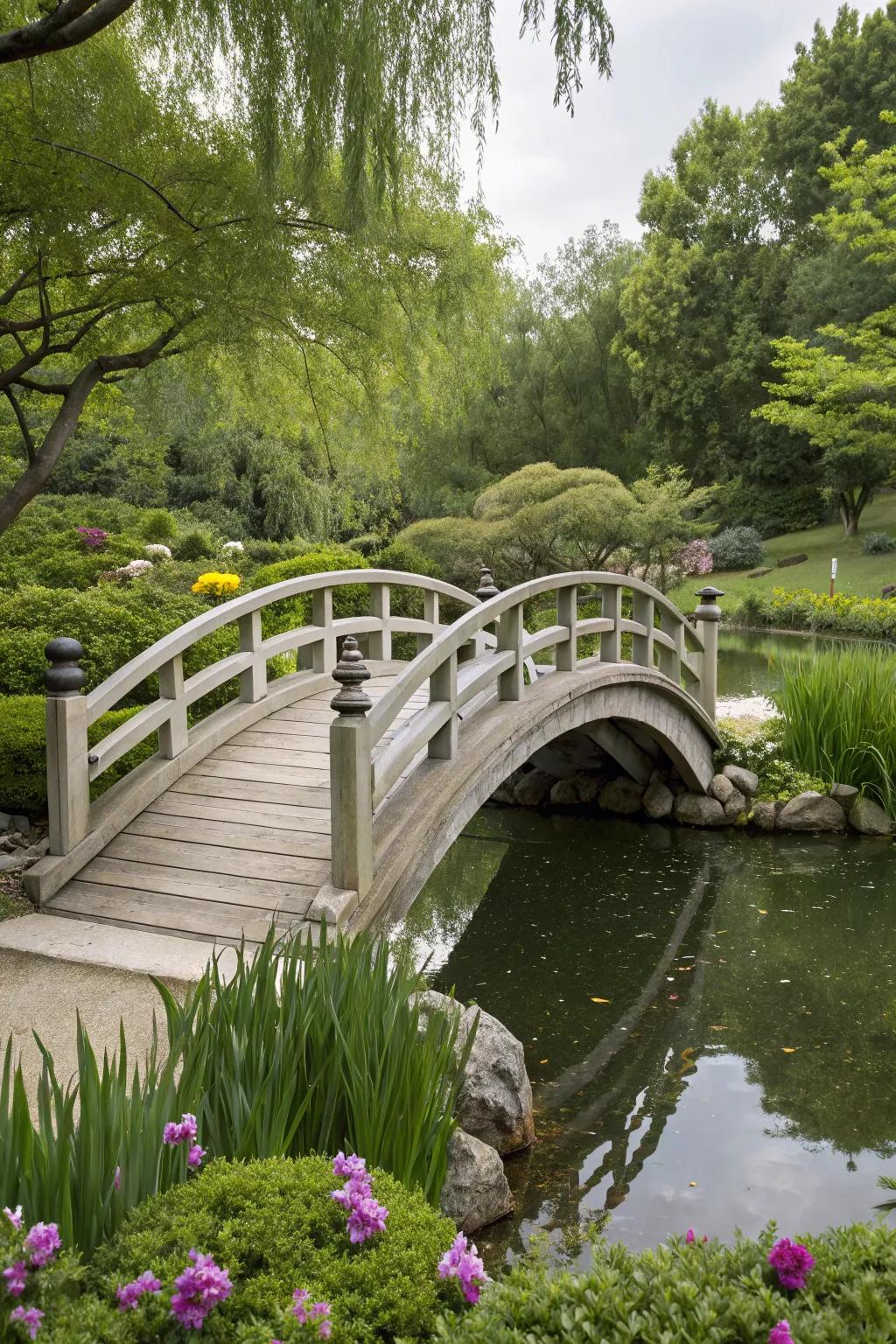
A small curved bridge over a pond or dry stream adds whimsy and elegance. It’s like having a little fairy tale in my backyard.
A few suggestions:
- Decorative Wooden Garden Bridge: Enhance your garden’s charm with this elegant wooden bridge, creating a whimsical pathway.
- Solar-Powered Garden Lanterns: Illuminate your garden bridge with these eco-friendly lanterns for enchanting nighttime strolls.
- Artificial Garden Pond Kit: Create a picturesque pond under your bridge with this easy-to-install artificial pond kit.
14. Curved Privacy Screens
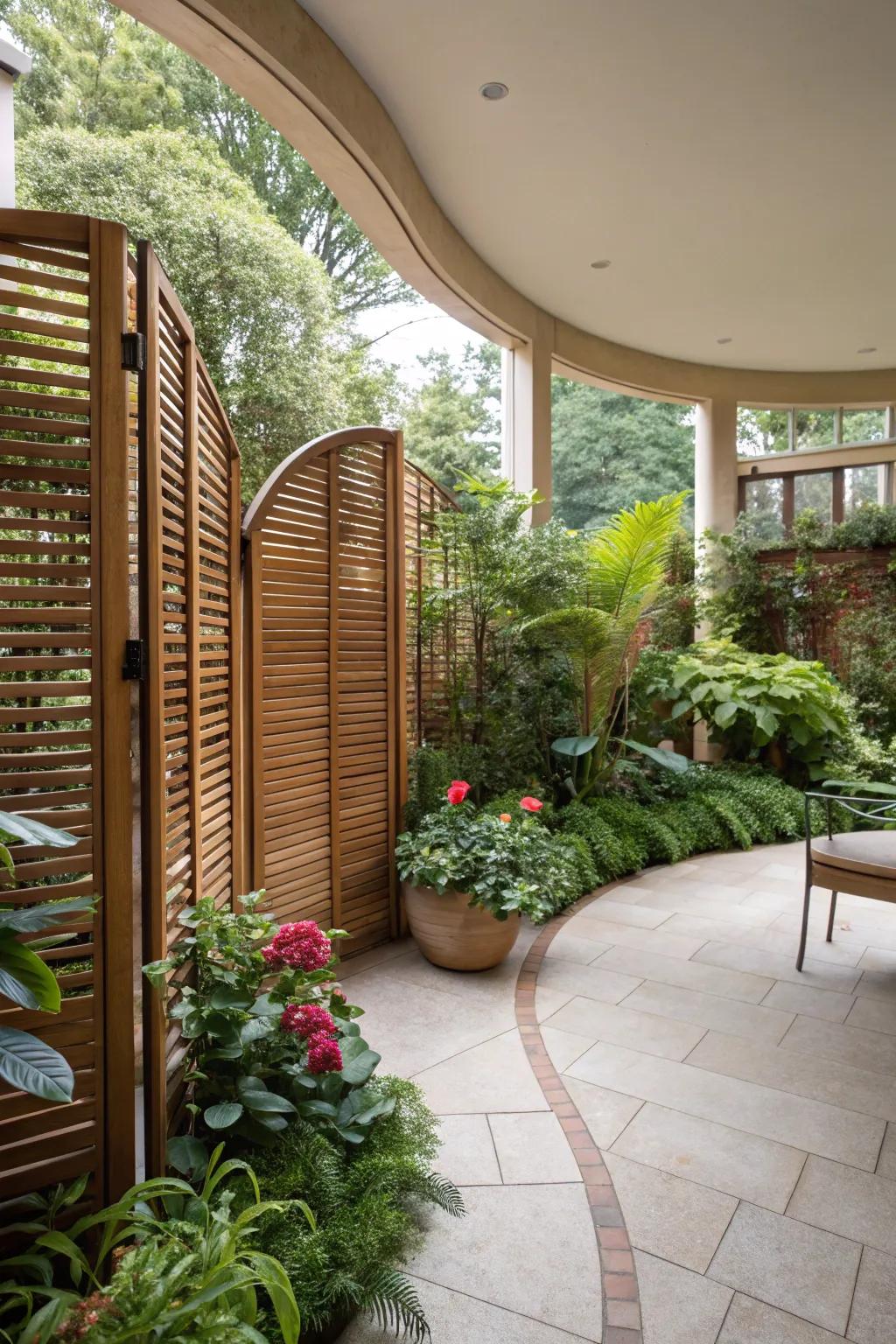
Install curved privacy screens to create secluded areas without harsh lines. I find this approach softens the edges of my patio beautifully.
Items that may come in handy:
- Outdoor Curved Wooden Privacy Screen: Enhance your garden with a stylish curved screen, perfect for creating cozy private spaces.
- Curved Metal Privacy Panels: Add modern elegance and seclusion to your patio with these durable curved metal panels.
- Flexible Bamboo Privacy Fence: Invite natural aesthetics into your space with this versatile, curved bamboo privacy solution.
15. Circular Fire Pits
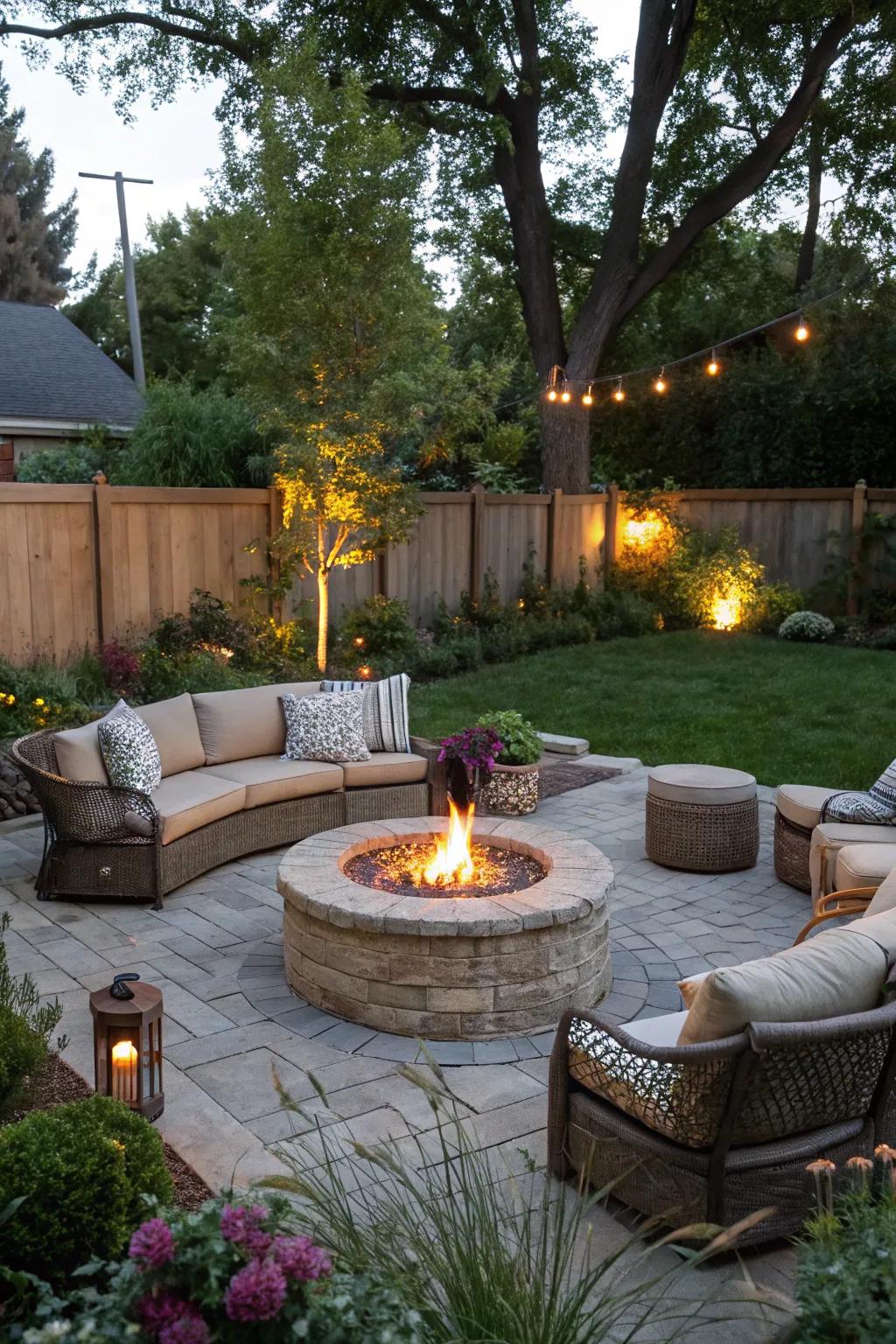
A circular fire pit naturally draws people together. It’s my favorite spot for evening gatherings with friends.
Might be a good match:
- Outdoor Patio Gas Fire Pit Table: Enhance your gatherings with a stylish gas fire pit table, perfect for warmth and ambiance.
- Weather-Resistant Patio Furniture Set: Create a cozy outdoor space with a durable patio furniture set, ideal for fire pit areas.
- Decorative Fire Pit Glass Rocks: Add sparkle to your fire pit with decorative glass rocks, enhancing flame beauty and color.
16. Curving Stone Steps
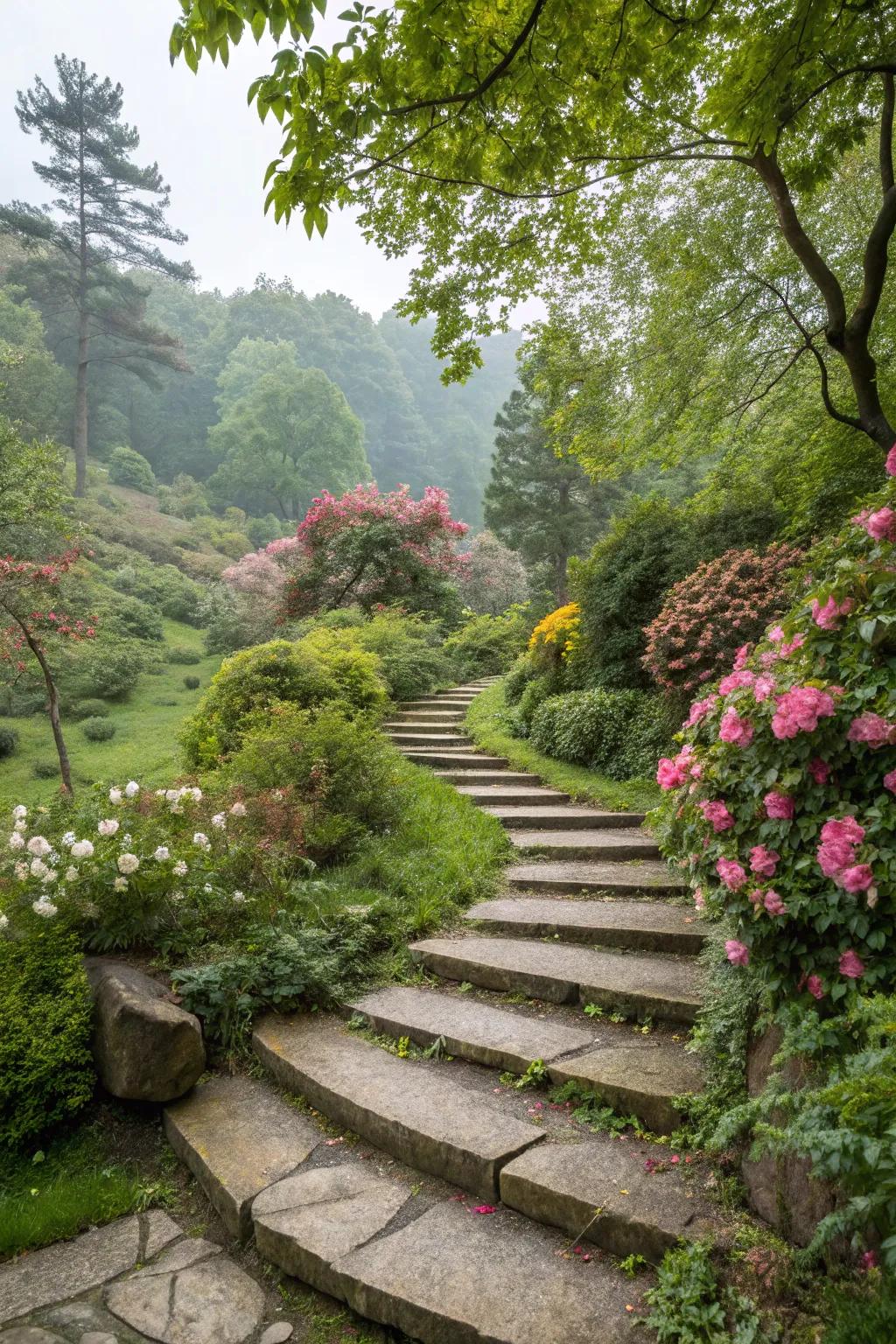
Curving stone steps can guide visitors gently uphill or downhill. In my garden, they connect different levels seamlessly and with charm.
Products that could assist:
- Natural Stone Pavers: Enhance your garden’s beauty with these durable, natural stone pavers. Perfect for elegant steps.
- Landscape Lighting Kits: Illuminate your stone steps at night with easy-to-install landscape lighting. Add safety and beauty.
- Garden Path Edging: Use garden path edging to neatly separate steps from greenery, giving a polished finish.
17. Curved Rock Gardens
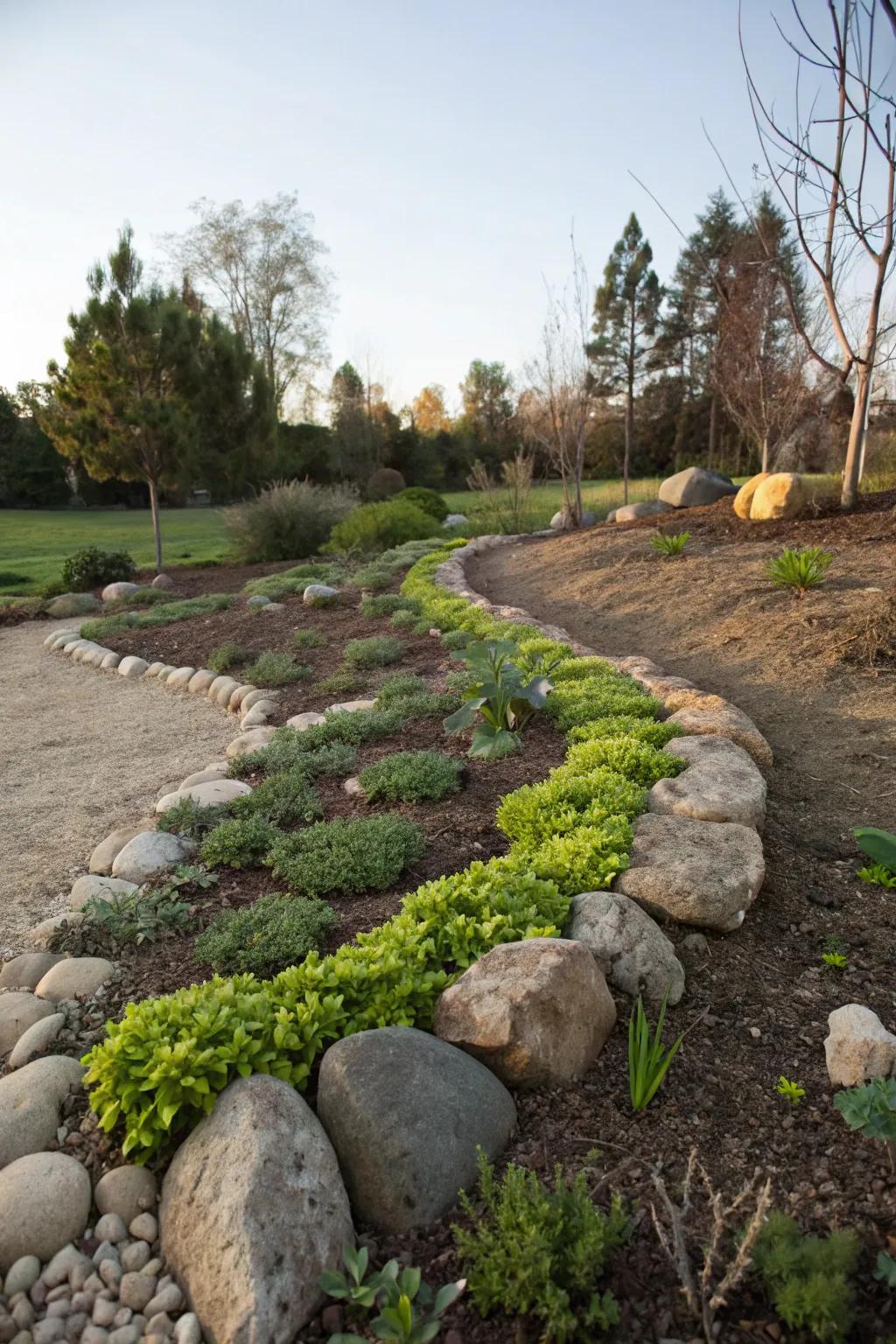
Arrange rocks in a curved layout to mimic natural formations. This approach has added a surprisingly tranquil spot in my garden.
May just do the trick:
- Decorative Landscaping Stones: Enhance your garden’s natural look with these versatile decorative stones. A perfect finishing touch.
- Garden Edging Kit: Create clean, curved lines effortlessly with this flexible garden edging kit. Easy to install.
- Succulent Plant Variety Pack: Add greenery to your rock garden with this vibrant succulent variety pack. Low maintenance beauty.
18. Curved Pergolas and Arbors
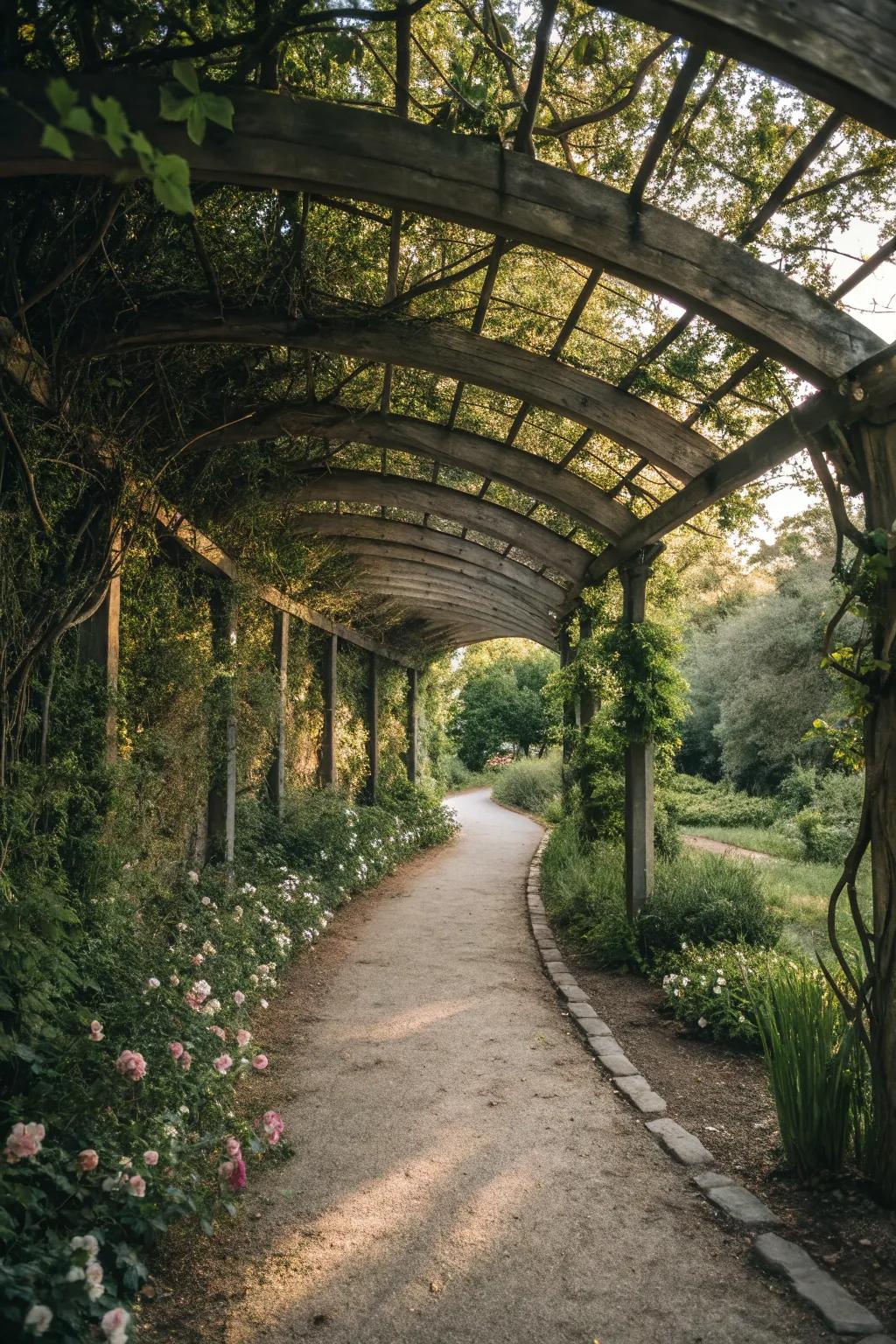
Add a curved pergola or arbor to frame a path or seating area. In my garden, these structures create an inviting entrance to different sections.
These products might be useful:
- Wooden Curved Pergola Kit: Enhance your garden path with a wooden curved pergola, inviting and charming for any entrance.
- Metal Arched Garden Arbor: Create an elegant entrance with a metal arched garden arbor, sturdy and stylish for any space.
- Vinyl Curved Pergola: Add a touch of modern elegance with a durable vinyl curved pergola over your pathway.
19. Curved Topiary Designs
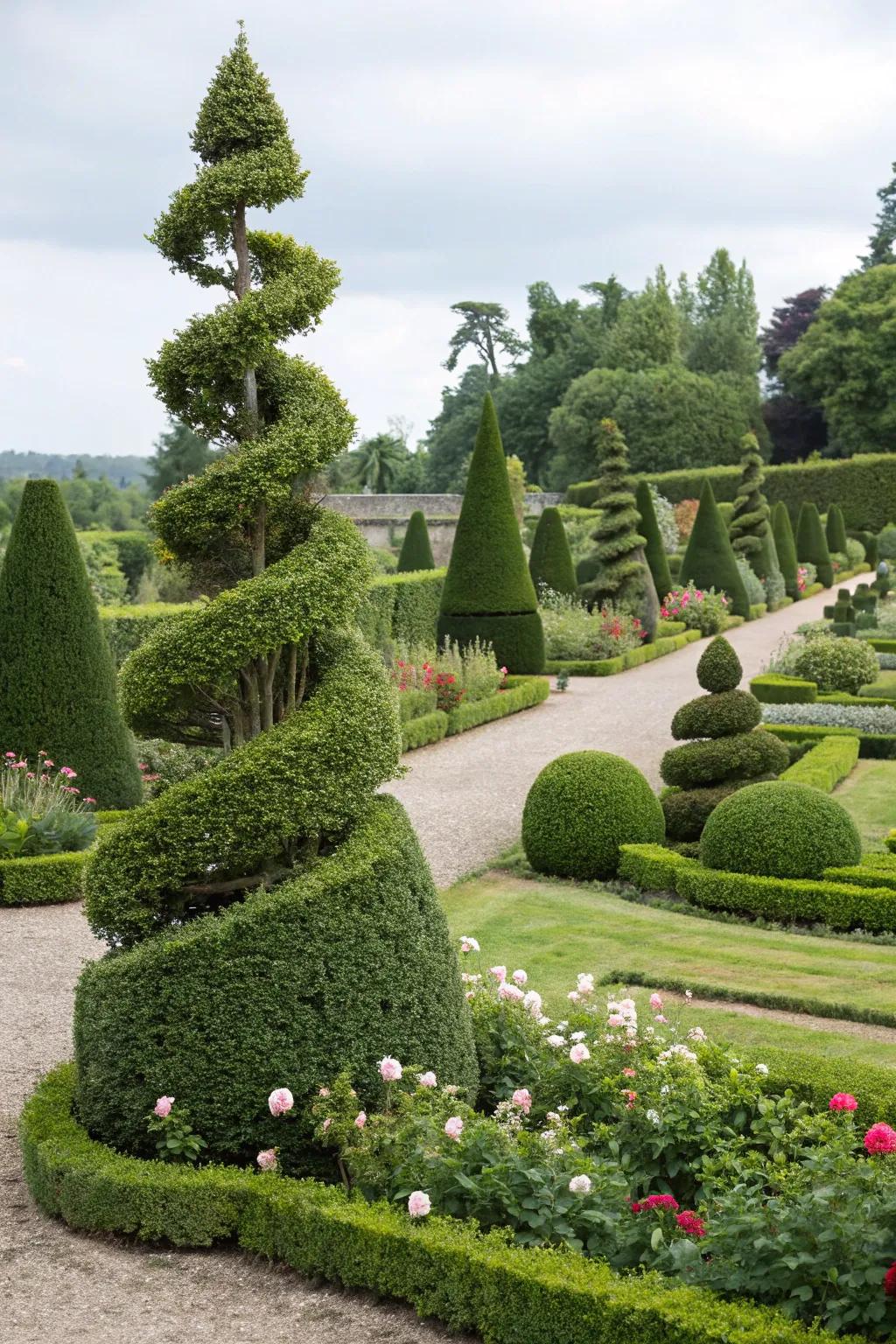
Shape topiary into curved forms for a playful, artistic touch. It’s a creative way to introduce structure without straight lines.
A few helpful options:
- Topiary Trimming Shears: Enhance your garden’s art with precision shears for effortless topiary shaping and maintenance.
- Adjustable Topiary Frames: Craft intricate topiary shapes effortlessly with adjustable frames, perfect for creative gardening projects.
- Spiral Topiary Plant Support: Support your spiraled designs effectively with sturdy plant supports for lasting shape retention.
20. Curved Seating Areas

A curved seating area can create a cozy corner to relax in. I’ve found that it naturally encourages conversation and feels welcoming.
A few relevant products:
- Curved Wooden Garden Bench: Enhance your garden with a curved bench for a charming and inviting seating area.
- Outdoor Patio Cushion Set: Add comfort to your seating with weather-resistant cushions designed for garden relaxation.
- Decorative Garden Lanterns: Illuminate your cozy seating area with charming lanterns, perfect for evening enjoyment.
21. Curved Flower Arches

A curved flower arch makes a stunning entrance or focal point. It’s a favorite feature at the entrance to my garden path.
Try these:
- Garden Arch Trellis: Enhance your entrance with this elegant arch trellis, perfect for supporting climbing flowers.
- Rose Plants for Climbing: Add charm with beautiful climbing roses, ideal for covering your garden arch in bloom.
- Decorative Solar String Lights: Illuminate your flower arch at night with enchanting solar-powered string lights for added elegance.
